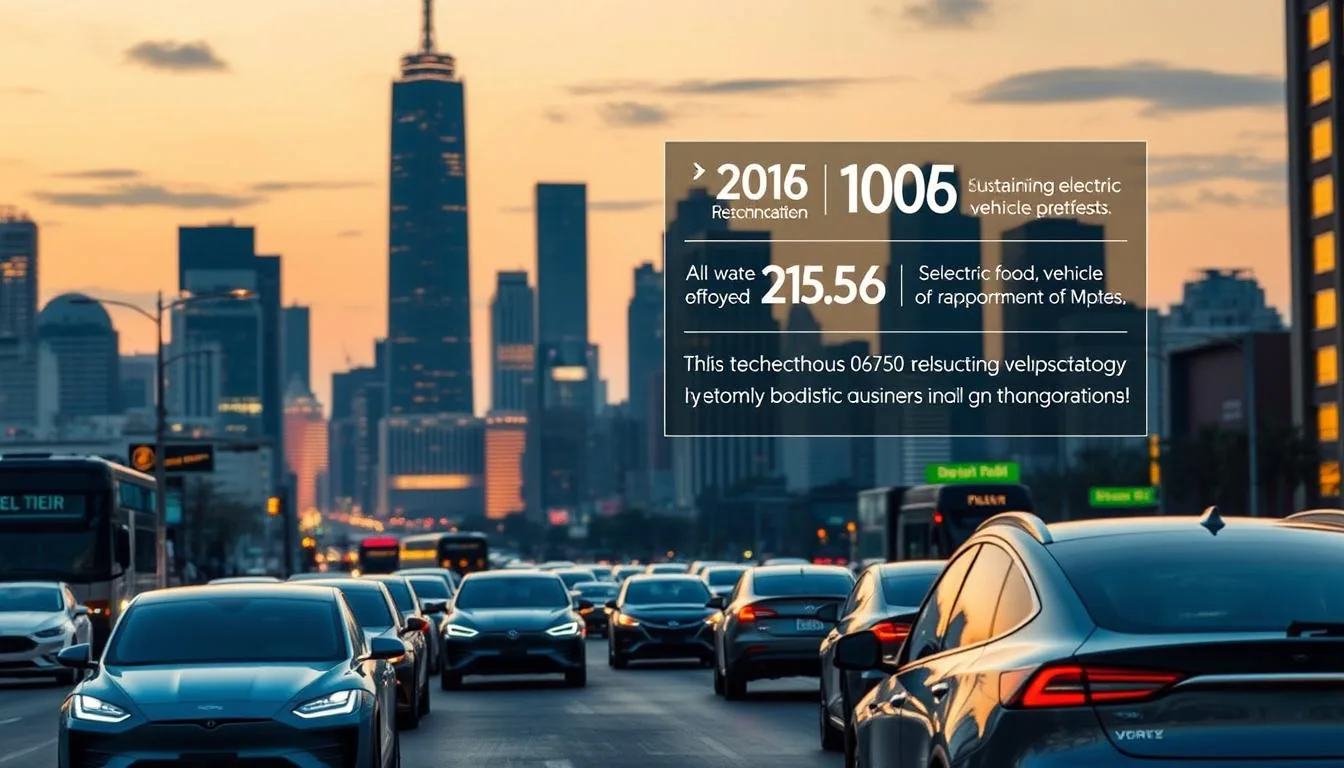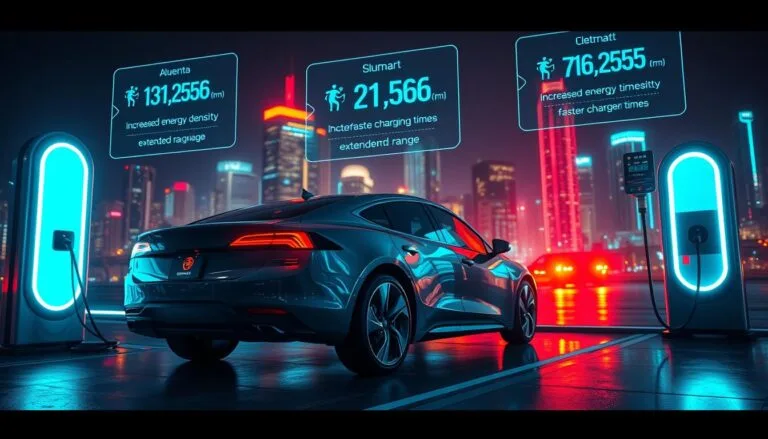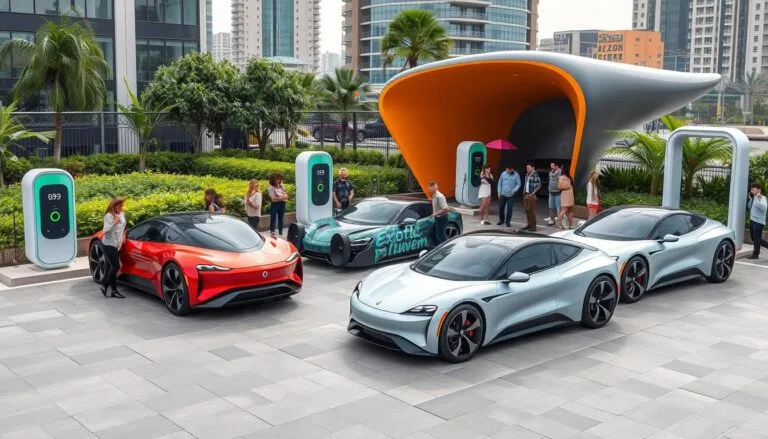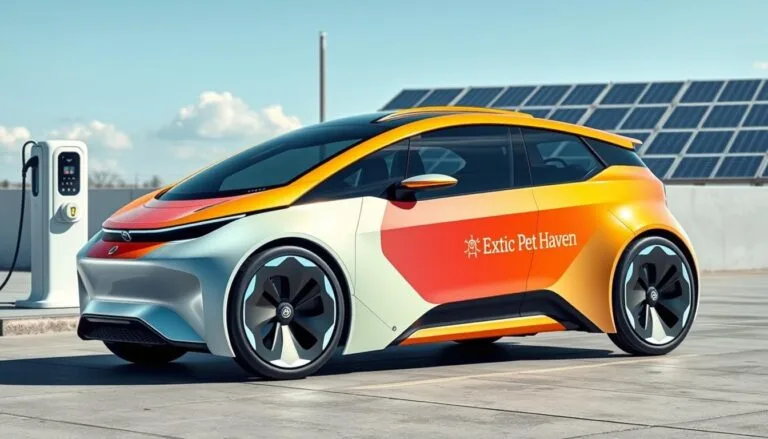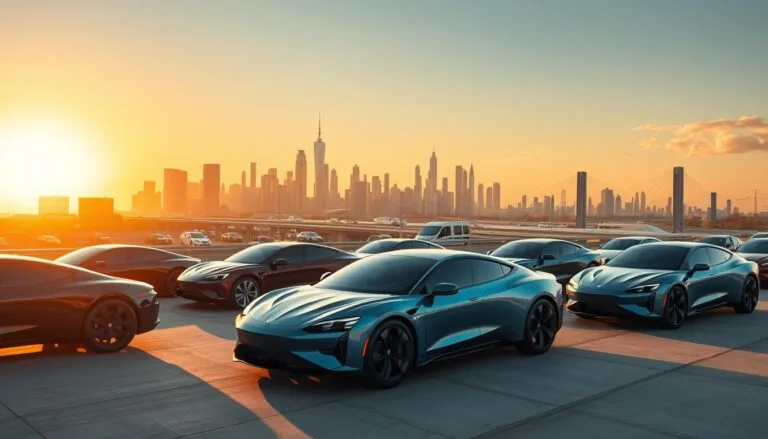Electric Vehicle Market Growth: Key Stats and News Shaping 2025
Imagine driving down the highway, knowing your car is more than just a ride. It’s a sign of the future. The electric vehicle market has grown from a small idea to a big change in how we move and live sustainably.
Electric car sales are growing fast. In 2023, over 14 million electric cars were sold worldwide. This big change shows how our way of moving is changing.
Your choices are important. The electric car world is changing fast. By 2024, more than 20% of all cars sold will be electric. This change means cleaner, better driving for everyone.
Table of Contents
Overview of Electric Vehicle Market Growth
The electric vehicle (EV) market is growing fast, changing the car world everywhere. Sales have hit big numbers in important markets around the globe.
What Is Driving EV Adoption?
Many important reasons are pushing people towards electric cars:
- People care more about the environment
- Better battery tech is coming
- Cars are getting cheaper
- There are government perks
Key Statistics to Know
The global EV market is growing fast. In 2023, almost 60% of new electric car registrations were in China. Europe had about 25%, and the United States had 10% of global sales.
“The electric vehicle revolution is not just coming—it’s already here.” – EV Industry Expert
Current Global Market Trends
Each region has its own EV adoption story:
- China is leading with over a third of new car sales being electric
- Europe is growing fast with 20% of car sales being electric
- The United States is seeing steady growth with 10% of car sales being electric
The market’s future looks bright. Experts predict the global EV market will jump from USD 671.47 billion in 2024 to USD 1,891.08 billion by 2032. This is a 13.8% annual growth rate.
Impact of Government Regulations on EV Growth
Government policies are changing the electric vehicle world. They offer big incentives for buyers and makers. This push for Environmental Sustainability Impact is changing how we see transportation and cutting emissions.
The United States is at a key moment for electric vehicle adoption. Government Incentives for EVs are key in speeding up this change.
Federal Incentives Driving EV Adoption
The Inflation Reduction Act has brought big financial help for buying electric vehicles. Key incentives include:
- Up to $7,500 tax credit for eligible new EV purchases
- Additional state-level rebates
- Reduced pricing for qualifying electric vehicles
State-Level EV Support
States are using their own ways to boost electric vehicle use. California is leading with tough emissions goals and big incentives for buyers.
| State | EV Incentive | Tax Credit Range |
|---|---|---|
| California | $2,000 Rebate | $1,500 – $4,500 |
| New York | $2,500 Incentive | $1,000 – $3,000 |
| Colorado | $5,000 Credit | $3,500 – $7,500 |
Future CO2 Emission Regulations
New rules will cut carbon emissions a lot. By 2035, car making and buying will change a lot.
With EV sales set to hit 143 million by 2045, government help is key to reaching green transport goals.
Major Players in the Electric Vehicle Market
The electric vehicle market is changing fast. Many car makers are vying for our attention. Knowing who’s out there helps us understand the shift to electric cars.
Tesla’s Market Dominance
Tesla is a big name in electric cars, but its share is dropping. In 2024, it sold 1.78 million cars, which is 10.3% of all electric cars sold. This is down from 13.2% in 2023. Tesla’s new ideas and strong brand keep people interested in electric cars.
Emerging Competitors and Startups
New players are making a big splash in the EV market. Some of the newcomers include:
- BYD: Leading with 22.2% market share (3.84 million units)
- Li Auto: 40% sales increase to 526,353 units
- Wuling: 44.7% growth with 688,415 deliveries
- Xpeng: 85.7% sales increase in December 2024
Legacy Automakers Transitioning to EVs
Old car makers are quickly switching to electric cars. Here’s how they’re doing:
| Manufacturer | 2024 Units Sold | Market Share |
|---|---|---|
| Volkswagen | 454,631 | 2.6% |
| BMW | 535,586 | 3.1% |
| Mercedes-Benz | 374,311 | 2.2% |
These big names are spending a lot on electric car tech. They want to keep up with demand and meet new green rules.
Technological Advancements Fueling EV Development
The electric vehicle revolution is powered by groundbreaking technological innovations. These changes are transforming how we think about transportation. Battery technology advancements and charging infrastructure development are creating unprecedented opportunities for electric mobility.
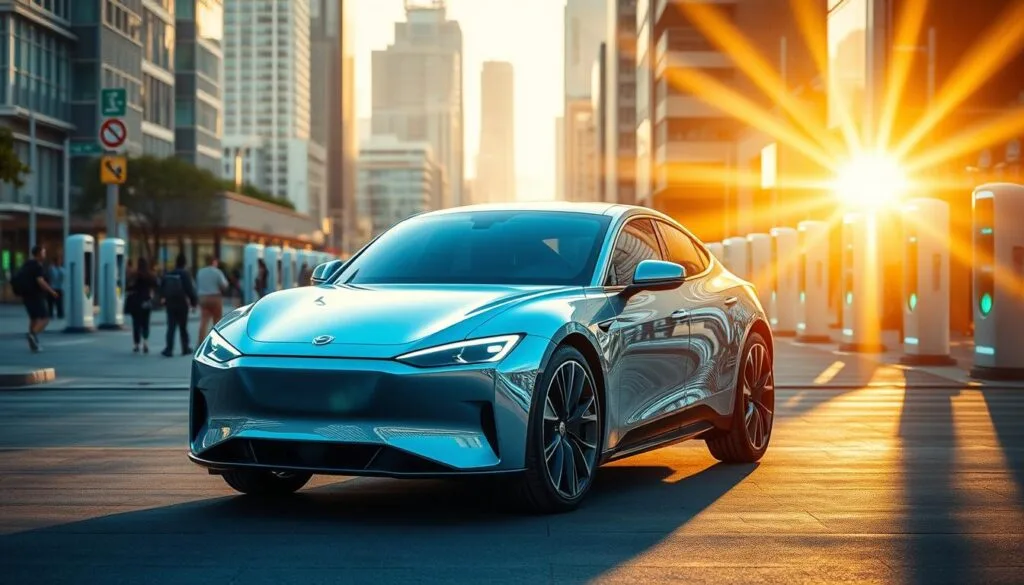
Electric vehicles are experiencing rapid technological evolution. Several key areas are driving significant progress:
- Enhanced battery performance and energy density
- Faster charging capabilities
- Reduced manufacturing costs
- Integrated smart technologies
Battery Technology Innovations
Recent breakthroughs in battery technology are making electric vehicles more accessible and practical. Experts predict battery pack prices will fall by an average of 11% annually from 2023 to 2030. This will dramatically improve affordability and range.
“The future of electric mobility lies in our ability to continuously improve battery technologies,” says a leading EV researcher.
Charging Infrastructure Development
Charging infrastructure is expanding rapidly, addressing previous limitations of electric vehicle travel. Start-ups developing EV charging technology attracted over $400 million in early-stage venture capital in 2023. This signals significant industry investment.
Autonomous Driving Integration
The convergence of electric and autonomous technologies is creating smarter, more connected vehicles. These advancements are not just improving vehicle performance. They are fundamentally reimagining transportation’s future.
As battery technology advancements continue and charging infrastructure development accelerates, you can expect electric vehicles to become increasingly sophisticated, efficient, and integral to sustainable transportation.
Consumer Preferences Shaping the EV Landscape
The electric vehicle market is changing fast. This is because of new attitudes towards cars and a focus on the environment. More people are looking at electric cars, changing the car industry’s future.
More and more people want EVs. In 2024, 9.2% of all cars sold in the US were electric. This shows a big increase in demand.
How EV Research Influences Buying Decisions
Today’s car buyers do their homework before buying an EV. They look at several things:
- Total cost of ownership
- Environmental sustainability impact
- Charging infrastructure availability
- Vehicle range and performance
What It Means for Everyday Drivers
EVs offer real benefits for daily drivers. With prices dropping and tech improving, electric cars are getting easier to get.
| EV Lease Trends | Percentage |
|---|---|
| EV Leases in Q4 2024 | 19.5% |
| Top Leased EV Models | Tesla Model 3 (12.2%) |
| Average Monthly Lease Payment | $504 |
Trends in Sustainable Choices
More people want to choose cars that are good for the planet. An amazing 80% of EV buyers stick with electric cars. This shows a big change in how we think about cars.
Thinking about your next car? The EV market is growing. It’s a chance to lower your carbon footprint and enjoy the latest car tech.
The Rise of EV Charging Networks
The electric vehicle revolution is changing how we travel. Charging infrastructure is key to making EVs more popular. As more people want electric cars, charging networks are growing fast.
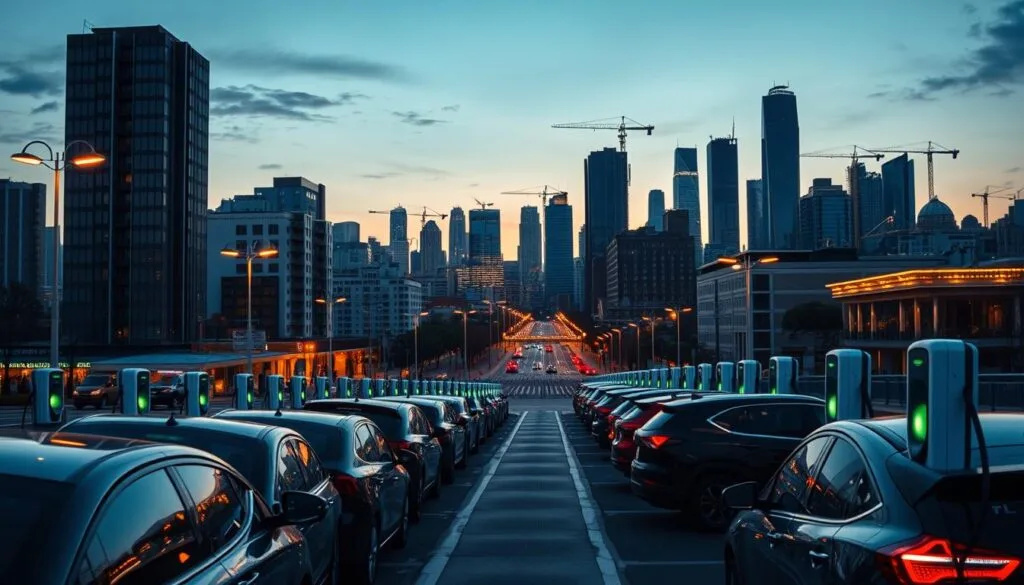
EV charging is growing fast worldwide. By 2035, there will be almost 25 million public charging points. This is up from about 4 million in 2023. It helps solve the big worry for EV buyers: running out of charge.
Expansion of Charging Stations Nationwide
The US is working hard to improve charging. The goal is to have 500,000 public EV charging ports by 2030. Here’s what’s expected:
- 900,000 public chargers by 2030
- 1.7 million public chargers by 2035
- More chargers in cities and rural areas
Tesla Supercharger Access Changes in 2025
Tesla is making big changes to its charging network. It will let other electric car makers use its Superchargers. This move will help more people use electric cars.
Other Major Charging Networks to Watch
Many big charging networks are growing:
| Network | Projected Chargers by 2035 | Key Regions |
|---|---|---|
| ChargePoint | 500,000+ | North America |
| EVgo | 250,000+ | Major US Cities |
| Electrify America | 350,000+ | Nationwide Coverage |
The EV charger market is set to grow a lot. It’s expected to go from USD 6.5 billion in 2023 to USD 10.2 billion by 2025. This is a 26.6% Compound Annual Growth Rate.
Electric Vehicle Market Projections for 2025
The electric vehicle market is on the verge of a big change. Looking ahead to 2025, we see big changes in EV adoption and market trends. Analysts say electrified vehicles could make up to 25% of new car sales, a big jump from before.
Expected Sales Growth and EV Adoption Rates
The EV market is growing fast. Here are some key points:
- Global EV sales expected to reach 23.5% of light-vehicle market by 2025
- Projected 45.3% market share anticipated by 2030
- Luxury brands like BMW showing robust sales increases
Regional Differences in Market Growth
Electric Vehicle Market Growth varies worldwide. China emerges as a dominant force, set to beat internal combustion engine sales for the first time in 2025. BloombergNEF predicts 65% of global EV sales will be in China.
Influencing Factors Beyond 2025
Several key factors will shape EV Adoption Trends in the future:
- Technological advancements in battery charging speed
- Decreasing vehicle prices
- Expanding charging infrastructure
- Government incentives and regulations
Understanding these market projections can guide your decisions on future car purchases and eco-friendly transport options.
The KGM Musso EV Launch: A Game Changer?
The electric vehicle market is changing fast with new models like the KGM Musso EV. This electric ute is a big deal, showing how automakers are changing their EV plans. It could change how people want to buy electric vehicles.
Breakthrough Features of the Musso EV
KGM’s new electric vehicle, the Musso EV, is making waves in the pickup truck market. It has two power options:
- Front-wheel drive model: 152kW motor with 340Nm torque
- Dual-motor all-wheel drive variant: 304kW with 636Nm torque
- Impressive 80.6kWh lithium-iron phosphate battery
Competitive Positioning in the EV Market
The Musso EV is a standout in the electric ute market. It has several key advantages:
| Specification | Details |
|---|---|
| Driving Range | 400 km (combined) |
| Charging Speed | 10-80% in 24 minutes |
| Maximum Towing Capacity | 1800 kg |
| Starting Price | Equivalent to A$52,000 |
Market Implications and Future Outlook
The Musso EV’s launch is a big change in electric vehicle plans. With no electric utes from Hyundai, Ford, or Toyota, KGM might have an edge in Australia. This could make more people want to buy electric vehicles and push others to innovate faster.
Challenges Facing the Electric Vehicle Market
The electric vehicle market is facing tough challenges that could slow its growth. Despite promising EV Adoption Trends, several big hurdles need to be overcome. These challenges affect both buyers and industry leaders.
Supply Chain Constraints and Material Shortages
Producing electric vehicles is hard because of battery material shortages. Trade rules and scarce minerals are major obstacles. Key issues include:
- High costs of battery production
- Limited availability of rare earth minerals
- Complex global supply chains
Public Perception and Market Myths
Many people are slow to adopt electric vehicles because of myths. They think EVs are:
- Too expensive
- Difficult to maintain
- Limited in driving range
“The future of transportation is electric, but we must overcome existing barriers,” says industry analyst Sarah Martinez.
Infrastructure Readiness Challenges
Charging infrastructure is a big concern, despite progress. Public charger numbers have grown by 40% in two years. Yet, rural and developing areas lack access. The power grid might not handle the demand for EV charging, mainly during busy times.
Cox Automotive forecasts 25% of U.S. car sales in 2025 will be EVs or hybrids. This highlights the need to fix these infrastructure issues. Knowing these challenges helps make better choices in the electric vehicle world.
Environmental Impact of Electric Vehicles
Electric vehicles are changing how we travel, cutting down on carbon emissions and supporting the environment. As more people choose electric cars, they help fight climate change and reduce harm to our planet.
Reducing Carbon Emissions
Electric cars are much better for the environment than traditional cars. Gasoline cars release about 165 grams of CO2 per kilometer. But electric cars only release 50 grams of CO2 per kilometer. This big difference means electric cars are much better for our planet.
- One EV can save about 1.5 million grams of CO2 every year.
- EVs use only 31-35% of energy, while traditional cars waste 75-84%.
- Using EVs could cut down transportation emissions by up to 25%.
Renewable Energy Integration
Electric cars can do even more to help the environment. By using clean energy, they can cut down their carbon footprint even more. Emerging trends show promising developments in clean energy integration. For example, Norway’s electricity grid is so clean it only emits 0.02 kg CO2-eq per kWh.
Future Sustainability Trends
Battery recycling and new uses for old batteries are making electric cars even greener. New technologies can recover up to 90% of battery materials. By 2050, these recycled batteries could store huge amounts of energy, making our transportation system even more sustainable.
Conclusion: Your Role in the Electric Vehicle Future
As electric vehicles become more popular, you’re leading a big change in how we travel. More people want EVs, leading to a big increase in sales. By 2024, over 20% of cars sold worldwide will be electric.
Your choices are key in this big change. EVs help reduce pollution from cars, which is a big part of our emissions. Plus, EVs save you money on fuel and upkeep, about $1,000 a year.
Keeping up with new EV tech and market trends is important. EV sales are set to grow, and more hybrid cars are coming. This means you’ll have more choices than ever before.
The future of electric cars is now. By choosing EVs and supporting green transport, you’re helping make our roads cleaner. Your choices matter a lot in making our cars better for the planet.

